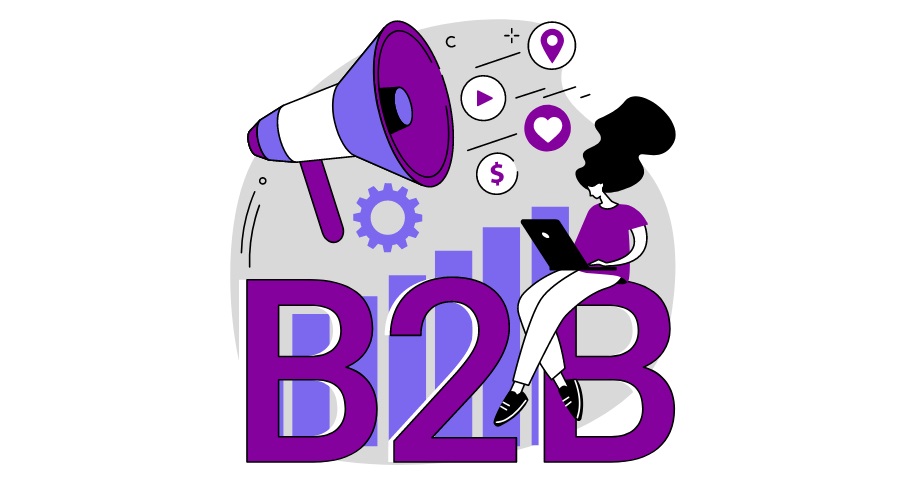Ok, we get it: SEO is not everyone’s cup of tea.
But, if you’re a business owner trying to market products and services online – you don’t really have the choice to ignore it any more.
However, rushing into SEO, engaging in malpractice, or simply undertaking a dodgy or messy job is going to hurt you more in the long run.
And hey, we get it. It can be frustrating to have to learn all of this stuff. After all, you probably didn’t go into business simply because you love SEO.
Luckily some of the biggest SEO mistakes, which we’ll jump into in a second, actually have some surprisingly easy fixes.
You might also be interested to learn that many of these common SEO mistakes are made not only by business owners, but by marketing professionals and SEO experts themselves.
NOT OPTIMISING FOR LOCAL SEARCH
A common SEO mistake, and one which occurs most often with physical brick-and-mortar businesses is to neglect local search.
These days, search engines like Google rely on signals such as local content, social pages, links and citations to provide relevant content to people in one specific location.
This is a massive part of consumers’ behaviour – in fact, 4 out of 5, or 80% of people use search to find local information.
If your business has a physical location – either office or store, one thing you’ll want to do immediately is to optimise for Google My Business. To do this:
- Create and verify a Google My Business Page.
- Use Google posts.
- Encourage customers to leave authentic feedback.
- Respond to reviews by mentioning the service location and team members’ names.
With all of this in place Google is more likely to trust the business is really in operation.
If you’ve got a business which spans multiple locations, you need to create location pages with information such as the name, address, phone number, store hours and descriptions.
Adding a Google Map to your website is also a great way to get attention from the search engine giant.
Ensure your name, address and phone number are correct and consistent across all locations online. Include this as crawlable HTML text on your site, rather than as an image, because that simply cannot be crawled from search engines.
If Google finds multiple entries for your business with contradictory information, they are less likely to believe it’s a real business.
However, work hard in this space and Google may reward you with a coveted sidebar space.
You’ll also want to list yourself on directories like Yelp, Merchant Circle, Google Places and FourSquare. Ensure any duplicate content or incorrect entries are simply deleted.
When it comes to keywords – focus on including region-specific keywords in your page titles as well as meta descriptions. If this seems a bit tricky, see if you can curate content based around customer success stories or profiles.
FOCUSING ON LINK QUANTITY OVER QUALITY
In the murky online world, the temptation to jump over to the dark side and put on the black hat is ever present. But, this is a huge mistake.
Looking for quick fixes or shortcuts means you might have found yourself engaging with an SEO strategy destined only to drive a high volume of backlinks to your site.
This, unsurprisingly, is not best practice. Like most things in life – with link building, you need to prioritise quality over quantity. And, don’t forget about the importance of internal links which ensure people stay on your site for a long time.
Rather than getting involved in Link Farms or paying for substantial amounts of links, you need to try attract high quality ones.
These should be relevant to both your website and to your industry. And yes, they may be harder to get, but they are also likely to be more trusted by search engines.
Ones to avoid are those from adult, pharmacy or gambling websites or those which have a lot of outgoing links.
Although it’s harder to get one link from a popular blog, this may actually have more of a positive impact on your search engine rankings than lots of very low quality ones.
There are several tools available which can be useful when it comes to checking the quality of links to your site, and the strength of the domain they are coming from.
Always remember, if you want people to link to your content, you need to make it exceptional – which brings us to my next point.
PUBLISHING POORLY-WRITTEN OR “PUFF” CONTENT
Another major SEO mistake is often due to falling for the misguided belief that quantity is better than quality.
Yes, it’s true that best practice is to be consistent in your approach to uploading content. But this should not be confused with simply spewing out high volumes of long-form articles which have little substance.
Once again, think back to the lessons which were drilled into you as a youngster. Simply producing content for content’s sake doesn’t help anyone.
Same goes for finding low-paid writers and using article spinners which simply take an article and reword it to make it look unique to search engines.
It might be well-optimised content, but it leads to poor user experience. Users know whether or not content is worth reading, and they won’t be likely to stay around on websites which they can’t trust for original, quality content.
The same goes for overusing keywords to the point where you’re simply writing for search engine crawlers and bots rather than people.
We’ve all seen the sort of content online where it’s clear keywords have just been stuffed into sentences where they clearly don’t belong.
This kind of difficult to read and grammatically incorrect content is simply not going to drive either clicks or conversion.
On the other hand, there is also no point writing content without actually doing keyword research beforehand.
Ensure content is relevant to the target keyword. You should also be using similar keywords in H2 tags and throughout the article.
Long form, actionable and timeless content is the sweet-spot you’re trying to hit. You need articles to be evergreen because it can take quite a bit of time for articles to actually arrive in the first page of results.
Clearly, there’s a problem if your piece finally climbs the rankings but is no longer relevant to either industry nor Google users.
Sometimes, it can be worth returning to an article to see if it needs refreshing and updating. Check whether references have aged well, and ensure the relevant keywords are still, well, relevant. If not, change them.
If there have been upheavals or big changes in the industry, why not update the piece to reflect this?
OPTIMISING FOR THE WRONG KEYWORDS
Sometimes, even when you’ve done your keyword research and you’ve spent substantial time and effort on creating a longform piece of content – something still doesn’t seem to be working.
In this case, the SEO mistake which is being made is a little tricker to correct.
Probably, you’ve optimised for the wrong keywords.
Here, you can go straight to the horse’s mouth, as they say, and actually talk to your customers about the kinds of search phrases they use to describe your industry. Why not actually ask them about what they would enter into Google when they have a particular want, need or question?
Optimising for global keywords, for example, is of little value if you only offer local services. If keywords are too generic, you’ll only attract visitors who have no interest in purchasing your product.
The same can be said regarding keywords which only attract those visitors who want information, when really you’re a business with a service or product to sell.
Ensure you actually understand what a customer’s intent is with their search.
Search for ‘SEO’ and you generally want to know what it is. But searching for ‘SEO agency’ means you want to know about companies who provide this service, and maybe you’re thinking about investing in this service.
It’s also better to focus on a geographically specific keyword – ‘SEO agency Sydney’ for example, over just ‘SEO agency’.
These long tail keywords are easier to rank for, due to their specificity.
Google Search Console can help optimsing for the right keywords
FORGETTING TO ANALYSE AND MEASURE SEO PERFORMANCE
It might seem like a strange addition to this list, but if you’re not reporting on and analysing your performance, you’re making a big SEO mistake.
These are essential elements to actually improving your overall marketing strategy.
Undoubtedly, we’ve all fallen into the trap of wanting to rank for keywords which are driving the most clicks. But, clicks are really only one aspect of SEO – you also need to drive conversion.
Setting up an analytics package to track and compare conversion for your keywords means you can quickly spot which ones are performing better than others.
As you analyse results, you might notice that lower-traffic phrases convert better because they’re more specific and more likely to drive sales.
This will allow you to simply discard the keywords which are not performing as well as they should.
NOT PROVIDING UNIQUE TITLE TAGS OR META DESCRIPTIONS
If you’re still using your company or website name as the title for every page throughout your website – this is a massive SEO blunder – and one you need to stop now.
In fact, it’s not just for SEO purposes, but every page should have a unique title. These are what is seen if someone Tweets, shares or re-posts your page as well as what is bookmarked.
Descriptive and unique titles, then, are important. Your company name can appear on every page, but just make sure they are at the end of the title, following something more specific for that page, for example.
Meta Descriptions can also be used as mini pitches for your page within search results. These also need to be as persuasive as possible, as well as unique and informative.
Think of your own behaviour when you do a quick Google search. If the meta description seems irrelevant or simply unoriginal, do you ever really click on the link to read more?
No, well, customers don’t do that either. They look for original, catchy, informative descriptions which entice them to the site in order to find out more.
USING OUT-DATED SEO METHODS
Unfortunately, or maybe fortunately, Google is now much smarter than it used to be. That means it might be time for you to throw out some of the older SEO methods in order to stay at the top of search results.
In fact, using these out-dated methods is actually one of the biggest SEO mistakes you can make.
The following SEO strategies are generally considered to be black hat, somewhat grey hat or at least bad practice:
- Doorway pages
- Hidden text or links
- Link farms or networks
- Keyword stuffing
- Creating duplicate content
- PBNs (Private Blog networks) to generate backlinks
These old techniques may have fooled the search engine giant once, but those days are long gone.
That’s not to say any of this has really been a bad thing. In terms of user experience, Google has only improved things for consumers. Their recent update to the algorithm – BERT – actually helps Google to better understand content and user search queries.
SEO should be targeted at reaching humans, rather than on beating the bots and cheating the search engines.
Look, going out alone and working on your SEO can be tricky. We get that, and Ambire is more than willing to point you in the right direction.



